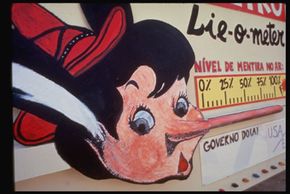In a society that's increasingly aware of its own negative impact on the natural world, it's no surprise corporations compete for consumer approval by promoting themselves as environmentally friendly or green. Such promotions might be as simple as sprinkling product packaging with leafy logos or as involved as publicizing investments in emerging technologies. Organizations spend billions of dollars each year in an attempt to convince consumers that their operations have a minimal impact on the environment. But can you believe the claims? How much environmental marketing is simply greenwashing?
Advertisement
The term greenwashing is an environmental take on whitewashing -- the attempt to cover up or excuse wrongdoing through false statements or the biased presentation of data. While the term greenwashing first emerged around 1990, the practice itself dates back to the mid-1960s, when corporations were already making an effort to improve their public image in light of the emerging modern environmental movement.
Now more than ever, it's in a company's best interest to put on an environmentally-friendly face. According to a recent study by the AARP, there are 40 million "green boomers" in the United States today. These environmentally conscious consumers make up more than half of the country's 79 million baby boomers (people born between 1946 and 1964). Combined with the younger generation of green-minded consumers out there, this makes for a very attractive consumer group.
But as with all forms of advertising and public imaging, questions inevitably arise regarding the validity of companies' environmental claims. Are a major oil company's concerns over pollution as genuine as its print ads make it seem?
In this article, we'll take a look at the six sins of greenwashing, learn why greenwashing happens and find out what advocates and lawmakers are doing about it.
Advertisement





